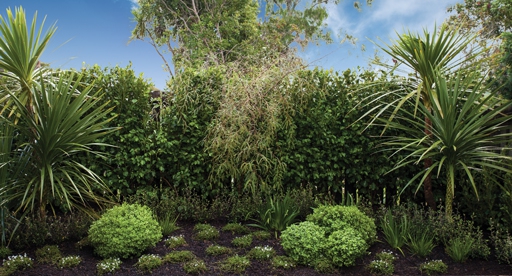
There are many benefits to incorporating natives into your garden including preserving native species, attracting birds to your garden and reducing the amount of care and water your garden needs. New Zealand natives can also offer a dramatic, modern look to your backyard.
Read our native planting guide below and achieve a sophisticated and stylish space with a mix of native plants.
Selection
There are native plants for all garden situations. It is easier to grow species native to your district so check with your local nursery. Otherwise check that the plant will tolerate your climatic conditions which might include humidity, frost, salt spray or drought.
Carefully select the right variety for your situation. There are many different growing styles and textures available for example ground covers, climbing and flowering varieties.
Some interesting varieties to choose from include:
- Libertia grandiflora - largest of the New Zealand Irises.
- Xeronema callistemon – Poor Knights lily with flax-like leaves.
- Cordyline australis – cabbage tree.
- Sophora - kōwhai.
- Pratia angulata – fast growing ground cover with small white flower.
- Pittosporum 'Golf Ball' - dense rounded ball of fresh green foliage.
- Griselinia littoralis - 'Broadway Mint', great for hedges.
- Corokia 'Frosted Chocolate' - dense hardy chocolate bronze foliage for hedges or borders.
Prepare
When to plant
- Planting can be done throughout year as long as there is plenty of moisture in the soil.
- Generally the best time is winter through to early spring.
- Plant hardy frost tolerance species in late autumn or winter. Plant sensitive species in spring (when any risk of frosts have passed).
Clear your chosen area before planting. If starting with a garden bed dig in Tui Compost and Tui Sheep Pellets, make sure they are well incorporated into existing soil. Natives do not require a particularly rich soil, but will benefit from the addition of organic material before planting.
If your soil is dry apply SaturAid granular soil wetter. It promotes even water distribution, making watering, rainfall and fertilisers more effective, even in sandy, clay or compacted soils.
Plant
Planting in garden beds:
- Remove the plant from its container, run a sharp knife down the root ball in several places to encourage new roots.
- Add a layer of Tui Garden Mix to the planting area.
- Dig a hole, approximately twice the depth and width of the root ball of your plant.
- Gently loosen the root ball of your plant and position in the centre of the hole.
- Fill in with Tui Garden Mix. Press the soil firmly around the base of the plant.
- Water well.
Planting in pots and containers:
- Firstly, remember that large plants need large pots! Check the recommendations for container size before choosing its home.
- Use a quality potting mix - preferably one that contains a controlled release fertiliser like Tui Pot Power. Natives are great container plants as they are typically low maintenance so using a good quality potting mix like Tui Pot Power will mean they need re-potting less often.
- Again SaturAid can be a great addition to ensure that there is even water distribution in the pot.
Maintenance
Mulching is essential for success. Tui Mulch & Feed is ideal as it already contains pea straw, blood & bone and powdered sheep manure that improves soil structure. Apply a layer of Tui Mulch & Feed around plants to a depth of 5-10cm. Re-apply every six months to provide an ongoing and organic nutrient source. This will help suppress weeds and keep roots protected from frosts and makes your new native garden look tidy and impressive.
Pruning or pinching out the young growing shoots when the plant is young will encourage branching and a more compact plant. Prune lightly after flowering and if possible before new growth begins.
Feeding
Feed with Tui Sheep Pellets during the key growing seasons of spring and autumn. Plants will benefit from the addition of Tui Blood & Bone which is a rich source of nitrogen for healthy plant growth as well as stimulating soil microbes to improve soil health.
Apply a gentle plant tonic like Tui Organic Seaweed Plant Tonic at least once a month for a healthy boost, especially in the summer months. Seaweed Plant Tonic can also be applied to sick or stressed plants to provide a boost of nutrients.
Post a comment
Natives Growing Guide Comments
Be the first to write a comment